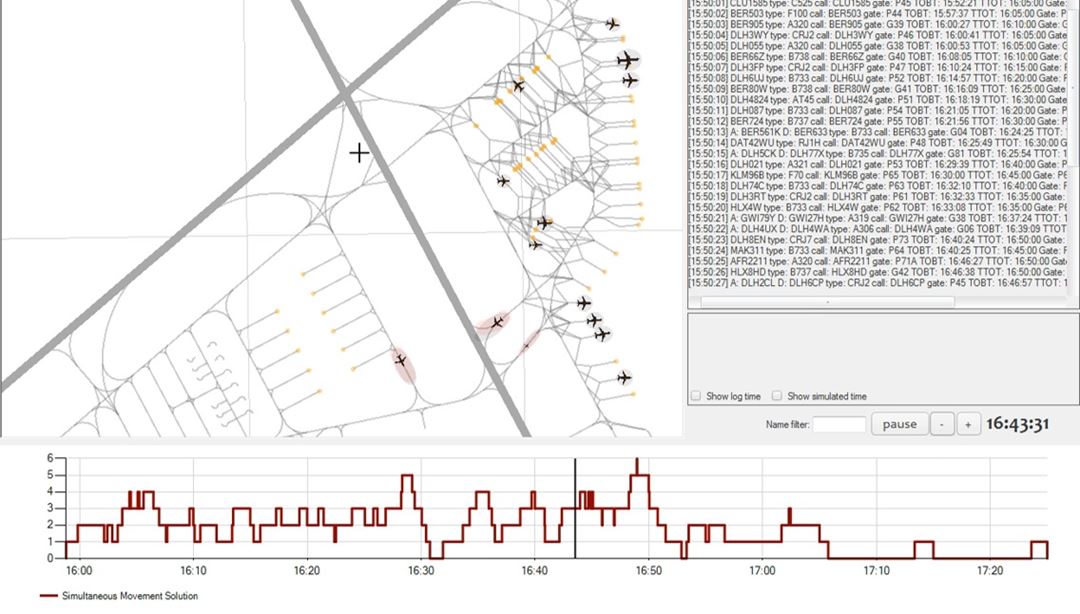About the SIMADES simulator
SIMADES is a discrete event simulator developed by the optimisation group at SINTEF DIGITAL. It is based on an agent-based modelling approach that makes it easily configurable to multiple application domains. SIMADES can be used in various industries for strategic and tactical decision support, testing, training and education.
Transportation
- Evaluation of road design
- Design of bus terminals
- Optimisation of traffic signal control scheme
- Optimisation of harbour logistics
Aviation
- Fast time simulation of air-side operations at airports
- Real-time simulation for training of air traffic controllers
Health care
- Design of hospital layouts
Supply chains and logistics
- Supply chain design
SIMADES FOR traffic simulation
SIMADES is easily applicable for microsimulation of road traffic. In 2015 the simulator was used in a project where we modelled the road traffic in the Bjørvika area of Oslo. Our simulation study verified the changes necessary to achieve a significant increase of capacity for rail replacement buses. Below is a video showing some excerpts from the simulation runs and a news article (in Norwegian) about the project.

Sånn blir de kvitt busskaoset
Når tog innstilles og busser må settes opp, blir det kaos ved Jernbanetorget. Forskere justerte løsningen litt, og NSB kunne doble avviklingskapasiteten.
SIMADES in Air Traffic Management
SIMADES has been used for fast time simulation of air-side operations at airports. As an example we used SIMADES in the ZeFMaP to demonstrate the potential for an increase of the overall performance of a control room. SIMADES was then combined with an optimization algorithm which optimized the trajectories of aircrafts to ensure spatial separations while maximizing throughput and punctuality. The exercise demonstrated significant reductions in taxi times and improvements in punctuality.



